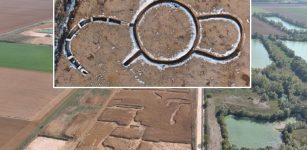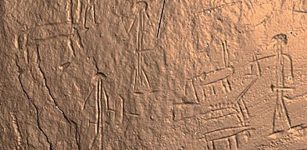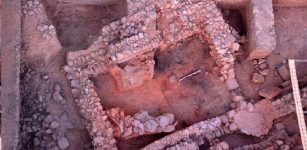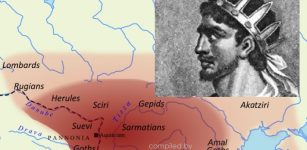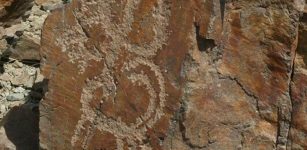Skull Of Biblical Giant Goliath Is Buried On The Hill Golgotha In Jerusalem – New Claim
Conny Waters - AncientPages.com - The existence of Biblical giant Goliath described in the Book of Samuel has not been proven. According to the Biblical account, the Philistine giant Goliath was defeated by the young David with a slingshot and a smooth stone in single combat.
For years researchers have tried to locate the remains Goliath, excavating all across Jerusalem, but no trace of the Biblical giant has been reported.
There are now claims that Goilath’s giant skull is buried on the hill of Golgotha, outside Jerusalem, Israel.
David and Goliath, a color lithograph by Osmar Schindler (c. 1888). Credit: Public Domain
Several researchers put forward a theory insisting there are reasons to search for the giant’s skull in this particular area.
US-based Christian minister Bonnie Nelson, pointed out that both the name of the hill, which could be translated as the Place of the Skull, and the Genesis prophecies support this theory.
“I would say logically, in looking at this stuff, David took the head of Goliath, and buried in Jerusalem on the hill of Golgotha. And that is why it became known as, the hill of the skull. Could it really be that simple?” Nelson said, noting that from her point of view, the Philistine giant represents the “seed of the serpent” predicted by the Bible’s first book, so “if Goliath’s head was buried there it fulfilled Genesis”.
Jewish-Christian thinker Ken Ammi agrees with Nelson saying that the name of the site where Jesus was crucified suggests its link to Goliath from the ancient city of Gath. According to him, Golgotha might be “a compound word which combines Goliath and Gath”.
It may be that Golgotha was referred to as such due to the skull-like rocks or due to Goliath’s skull being buried there or a combination of the two: perhaps his skull was buried where the rocks look like a skull”, he said, voicing hope that “one day archaeologists will dig up Goliath’s skull” if it has not been moved.
David holds the severed head of Goliath as illustrated by Gustave Doré (1866). Credit: Public Domain
Rick Shenk from Bethlehem College & Seminary also thinks the name is by no means a coincidence.
“Hundreds of years later, Jesus was crucified at the ‘place of the skull’ outside of Jerusalem. But why was that place called Golgotha in Jesus' day? The text does not tell us, but it is intriguing that this place name sounds very much like, Goliath”, he said.
See also: More Archaeology News
According to him, even if the etymology of Golgotha’s name is different, it was located in the area of the very same city where David took the head of the defeated giant.
Archaeologists have yet to prove whether these claims can be supported. At present times, the existence of giant Goliath remains one of many Biblical mysteries.
Written by Conny Waters - AncientPages.com Staff Writer



